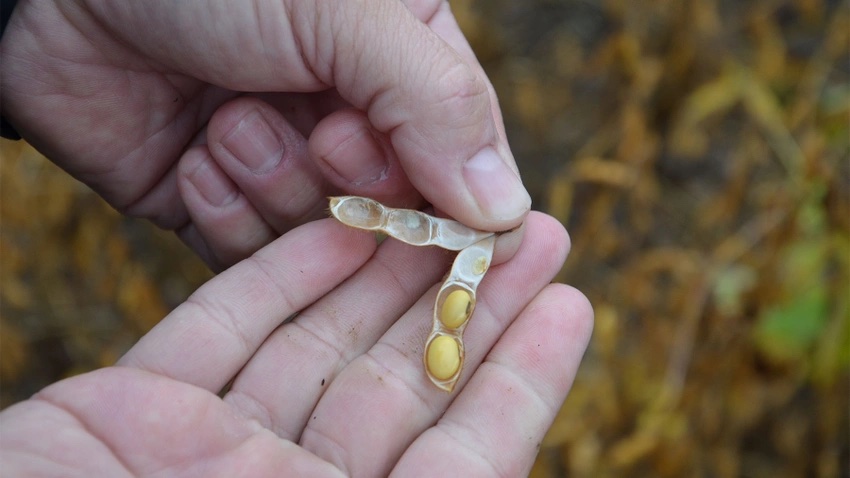Scout to the end to protect yield

Is there any reason to keep scouting for insects once beans are in the pod? When is it no longer profitable to spray insecticide?
The Indiana certified crop advisers panel answering this question includes Steve Gauck, regional agronomy manager for Beck’s, Greensburg, Ind; Bryan Overstreet, Conservation Cropping Systems Initiative agronomist, Valparaiso, Ind.; and Dan Ritter, central region agronomist, Dairyland Seed.
Gauck: To maintain high yields and a profitable crop, scouting must continue all season. Insects can be a concern up to harvest. Once soybeans are in the pod, we still need to maintain leaves as an energy source to fill those beans in the pods. Once soybeans start to dry down and lose their leaves, we need to scout for stinkbugs, as they can pierce the pod, leading to damaged and diseased soybeans inside. This is not a common issue in most years, but we see fields and areas each year where soybean quality is degraded due to stinkbug damage late in the season. Just a few seasons back, it was a bigger issue, resulting in lower-quality soybeans.
Overstreet: Bean leaf beetles and stinkbugs are two pests that will feed on pods. Both insects are attracted to the pods as they ripen and will continue feeding until soybeans are mature. The threshold for bean leaf beetle feeding that I use before initiating treatment with insecticides is 5% of pods showing signs of feeding, and/or 10 beetles per foot of row.
Stinkbug damage is very hard to see from outside the pod due to the way the stinkbug eats with a piercing mouth part. A sweep net is very helpful for scouting them. The threshold for stinkbugs to justify treatment with insecticides is 20 stinkbugs per 100 sweeps. Once pods mature, they are less attractive to the pest. You can stop scouting then.
Ritter: Other than the dead of winter, there probably is not a time where we couldn’t learn something from a good trip across the field, scouting to see what is happening at the time. What you learn comes down to timing and other critical activities. To answer your question if you should continue scouting when soybeans are in the pod stage, my answer is a definite yes. To me, this is a crucial step, especially during the last few years. I have been observing more stinkbug and bean leaf beetle feeding on pods recently. While feeding on leaves can indirectly affect yield, pod feeding has a direct impact on yield and quality.
For stinkbugs, the threshold is a third to 1 stinkbug per foot of row, up to mid-pod fill. Profitability tends to diminish as the pods develop. For bean leaf beetles, scouting should continue through the R5 to R7 reproductive stages. Consider treatment if there is 10% pod injury and three beetles per net sweep.
Editor’s note: Recommendations for treatment thresholds vary. For yet another opinion, see the section on soybean insects in the Purdue University Corn & Soybean Field Guide.

